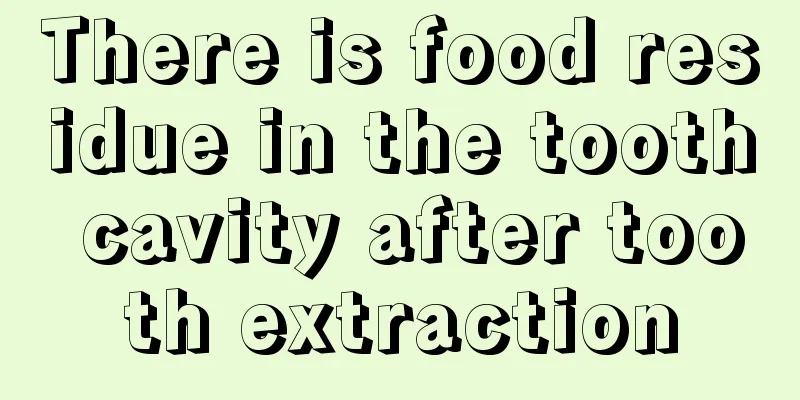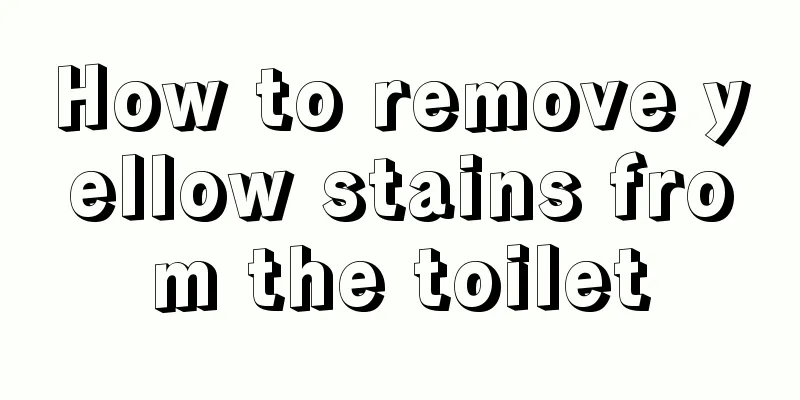There is food residue in the tooth cavity after tooth extraction

|
Chinese people's teeth are not complete. There may be some gaps or holes, which will cause all the food to remain in them when eating. Over time, more and more food residues will remain in the gaps or holes. When extracting teeth, you will find that the holes are full of food residues. Therefore, in order to prevent this phenomenon, it is very important to pay attention to oral hygiene. Daily oral hygiene includes brushing the tooth surface and cleaning the adjacent surfaces. Everyone knows that brushing teeth is the main way to keep teeth clean, but quite a number of people do not know the art of brushing teeth. The correct way to brush your teeth is to brush in the direction of tooth growth. First, place the toothbrush flat in your mouth, lightly press the bristles against the edge of the gums, then gently turn the brush cup to gradually turn the bristles toward the tooth surface. Brush the upper teeth from top to bottom, and the lower teeth from bottom to top, repeating this process. Each time you brush an area, you need to go back and forth 5 to 10 times. This will not only clean the tooth surface and the gaps between teeth, but also massage the gums properly. After brushing the outside, brush the inside. The inside of the teeth is most susceptible to stains. When brushing the inner surface of the upper and lower front teeth, the toothbrush should be held upright and brushed up and down along the gaps between the teeth. When brushing the biting surface of the back large teeth (molars), use a horizontal brushing method to brush back and forth. However, even with the correct brushing method, only about 70% of dental plaque can be removed. Much of the plaque remains below the contact points between the adjacent teeth or in other areas that are difficult to clean. Tools commonly used for interproximal surface cleaning include dental floss, toothpicks and interdental brushes. Dental floss is a tool made of nylon, silk or polyester thread for cleaning plaque on the adjacent surfaces of teeth. It is particularly suitable for flat or convex tooth surfaces. When cleaning teeth, you can take a piece of dental floss of about 25 cm, tie a double knot at both ends of the floss to form a coil, or take a piece of dental floss of about 3 cm, wrap the two ends of the floss around the two middle fingers, and control the distance of the dental floss between the two fingers. When inserting it into the gap between teeth and feeling tight and unable to pass through, you can make a sawing motion back and forth, pass through the contact point, and gently reach the tooth surface under the contact point. At the same time, place the dental floss at the bottom of the gingival sulcus to clean the gingival sulcus area. Be careful not to press hard into the tissue too deep below the gingival sulcus. Then enter the adjacent tooth gaps in turn, scrape the adjacent surfaces of all teeth one by one, and rinse off the scraped plaque. You can also use a toothpick or interdental brush to clean your teeth. When the gingival papilla shrinks, especially after periodontal surgery, when the tooth gap increases, it is most appropriate to use a toothpick to clean the exposed tooth surface. If there is a gap between the teeth, insert the toothpick at a 45° angle, with the tip facing the occlusal surface and the side edge touching the gums in the gap between the teeth. Especially in the concave root surface and root bifurcation area, the tip and side edge of the toothpick can be used to scrape and pick. If there is food fiber impaction, buccal and lingual puncture can be performed to remove the food and then rinse the mouth. When using a toothpick, be careful not to press the tip of the toothpick hard into the healthy interdental papilla area, as this will create a gap that did not exist before. Such a small gap is extremely difficult to keep clean, and you will have to use a toothpick to scrape it frequently, causing the gap to grow larger and larger. |
<<: What should I do if I have a toothache after having porcelain teeth?
>>: What to do if the gap between front teeth is too big
Recommend
How big is the largest stone
Stones are a common disease in clinical medicine....
Can prostate cancer be treated? How long can one live?
Prostate cancer can be treated with surgery, radi...
What does facial paralysis mean?
We always like to joke that a certain star seems ...
Swollen and painful lymph nodes in the neck
Diseases are very harmful to human health. When y...
Can esophageal cancer cause laryngeal cancer?
Esophageal cancer generally does not cause pharyn...
What are the benefits of buttocks therapy
In the 21st century, health preservation has beco...
How to make thick eyelids thinner?
The condition of the eyes is very important to pe...
Nursing measures for pancreatic cancer should be in place
Pancreatic cancer is a major cancer disease. Afte...
Heart rate during anesthesia
Everyone's heart rate is different, so it is ...
What are the main symptoms of bladder cancer? There are three symptoms that indicate bladder cancer is near
The occurrence of bladder cancer can bring great ...
What are the folk remedies for treating iron deficiency anemia?
The incidence of anemia is very high among all ki...
What lesions will appear in ovarian tumors
Do you know the symptoms of ovarian cysts? Ovaria...
Probability of metastasis and recurrence of endometrial cancer
Endometrial cancer is a common gynecological mali...
What are the most effective treatments for lymphoma
The incidence of lymphoma has been very high in r...
It turns out that old tea leaves have these characteristics, effects and functions
Many people don’t know what Laotou tea is. In fac...









